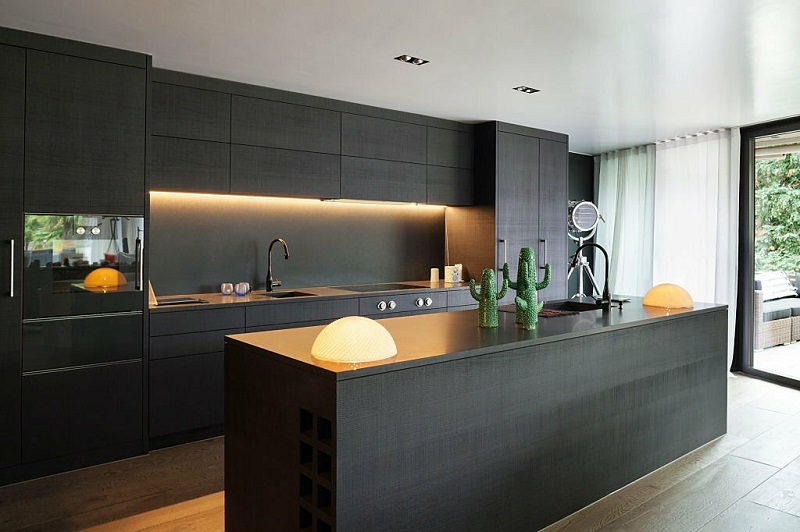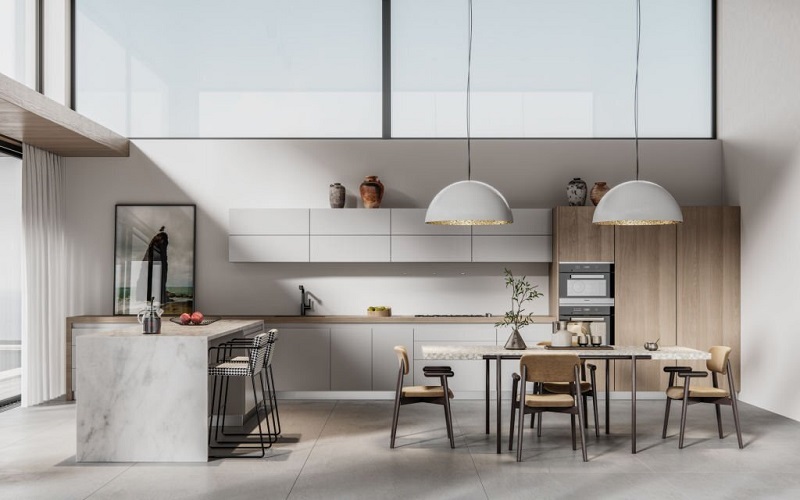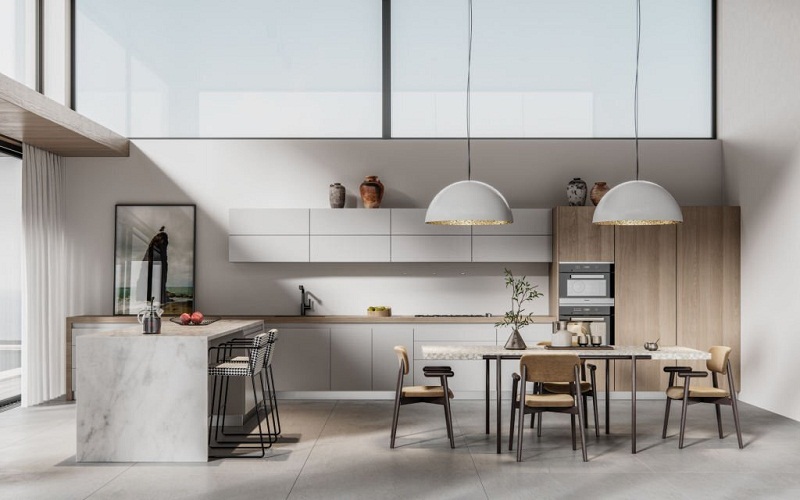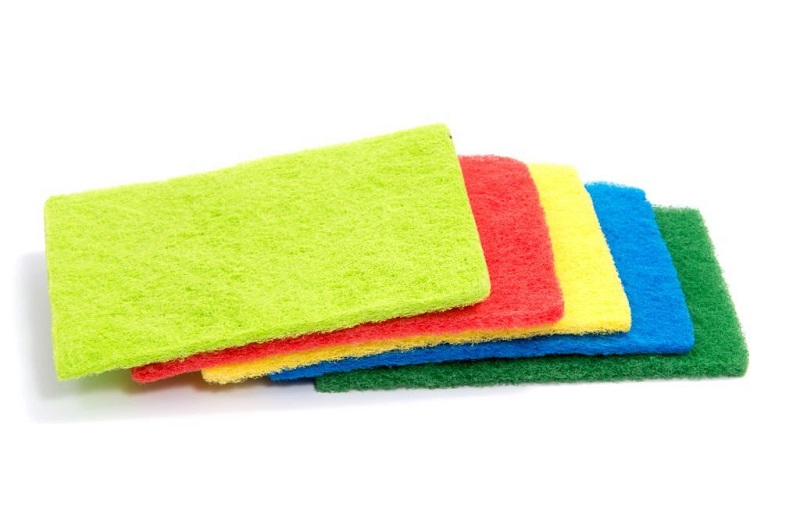Choosing materials for a kitchen makeover is about more than just creating a visually appealing space. It involves designing a functional, comfortable, and durable environment where memories will be made. A well-designed kitchen can elevate both your home’s appeal and its practicality, whether you are preparing meals for your family or having friends over for a dinner party.
A kitchen makeover can be both an emotional and a practical investment. The kitchen is often considered the heart of a home, and rightfully so; it’s a place where family and friends come together, share meals, and create lasting memories. That’s why it’s important to create a space that truly reflects your style and meets your needs.
However, selecting the right materials for your kitchen makeover can sometimes feel overwhelming. There are a multitude of factors to consider, such as your aesthetic preferences, budget, and lifestyle. This extensive guide is geared to help homeowners navigate through the tricky process, by highlighting various materials, their benefits and drawbacks, and factors to consider when choosing an expert to assist in the renovation.
Setting Your Objectives
Undertaking a kitchen makeover starts with identifying what you want to achieve. Are you seeking to improve your kitchen’s functionality? Do you simply want a more stylish space? Or perhaps you’re in search of materials that offer easy maintenance and long-term durability. Knowing your objectives can guide your material selections, ensuring you are satisfied with the result.
Visualize your dream kitchen; think about what you love about your current kitchen, what you don’t, and what you wish to add. Consider the size, layout, color schemes, storage options, appliances, and other features that you would like to have. This visual image serves as a roadmap, helping you choose materials that bring your dream kitchen to life.
Ask yourself questions like, ‘What will the space be predominantly used for?’ or ‘Who will be the primary users of the kitchen?’ Answering these questions will clue you in on what countertop material would work best, the type of flooring that suits your needs, and what style of cabinets would fit perfectly into your envisioned space.
To sum up, having a clear understanding of your individual needs and goals is crucial. It provides a much-needed framework, simplifying the process of selecting materials and ensuring your kitchen makeover aligns with your vision.

The Role of the Kitchen in a Home
As one of the most essential spaces in a home, the kitchen plays a crucial role. Beyond the realm of cooking, it’s a meeting spot, a social hub, an entertainment zone, and sometimes, even an office. Therefore, the chosen materials for your kitchen must be accommodating for a range of activities and ensure an inviting atmosphere.
Contrary to what we often think, designing a kitchen is not just about aesthetics; it’s about harnessing the potential of each element in the kitchen to enhance its functionality. The right countertop surface can provide an impactful preparation area that is both robust and easy to clean. Selecting durable flooring that can withstand high foot traffic and accidental spills while still accentuating the kitchen’s overall beauty is also vital. Similarly, deciding on cabinets that are both visually appealing and offer ample storage space is equally important.
Your kitchen’s materials serve as the foundation for its functionality and ambiance. So, let your decision be guided not just by the visual allure of these elements, but by how they make your daily life easier and more pleasurable. Your kitchen should be a space that reflects your personal style and meets your practical needs.
Balance of Function and Style
Striking the right balance between function and style is key when planning a kitchen makeover. Function needn’t be compromised for style and vice versa. In fact, the most effective kitchens seamlessly merge these two aspects to create a cohesive space.
To achieve this balance, start by choosing a theme or style that you love. Next, consider how the materials that align with this aesthetic can also meet your functional needs. For instance, you might love the look of a marble countertop, but if you use your kitchen frequently for meal prep, a less porous and more scratch-resistant material like quartz might suit you better.
Remember, it’s not always about having the highest-end materials, but about having the right ones. The materials you choose should serve a clear purpose and hold up to your lifestyle while also contributing to the overall style of your kitchen.
Material Selection: An Overview
The materials you choose play a central role in defining your kitchen’s appearance and functionality. Let’s start by looking at some of the popular options.
Countertops serve as the workhorse of your kitchen and the material you pick can greatly influence the kitchen’s functionality. Granite offers a high-end look and boasts impressive durability and resistance to heat. Quartz, on the other hand, is an engineered product offering a wide array of colors and patterns. Hardwood provides warmth and is easy on your knives, though it requires regular maintenance.
When considering flooring, ceramic tiles are an affordable option that comes in various styles and is resistant to heat and breakage. Timber offers a timeless look but needs to be protected from moisture and dents. Vinyl is a low-cost, water-resistant option that is soft underfoot.
Cabinets often occupy a significant part of your kitchen, so their choice can dramatically influence the look of your room. Solid wood cabinets are durable but can be expensive. Plywood offers a cost-effective versatility with high durability while stainless steel brings an industrial edge to a kitchen and is resistant to heat and stains.
Material Deep Dive
After you have an overview of the options, let’s deep dive into each material’s characteristics.
Granite countertops are an investment but provide high heat, crack, and scratch resistance. They require sealing but are nonetheless easy to clean. Quartz counters not only look luxurious, but they are also non-porous, stain-resistant, and easy to maintain. However, they can be more expensive than other materials. Wooden countertops add a warm, natural feeling, but need regular maintenance. However, they’re gentle on breakables and knives and are moderately resistant to heat.
In flooring, ceramic tiles are an adaptable and low-maintenance solution but may be uncomfortable for standing. Wooden floors lend a warm, timeless look to any kitchen and are comfortable underfoot, but they’re susceptible to water damage and scratches. Vinyl is a newer player in the market and provides a wide array of design options. It’s water-, stain-, and wear-resistant, and provides an easy-to-clean surface.
Speaking of cabinets, solid wood units exude a high-end feel but can be sensitive to temperature and humidity changes. Plywood cabinets are less affected by humidity variations and can bear heavy weights, making them a practical choice for many homeowners. Stainless steel options are extremely durable, easy to clean, and heat-, moisture-, and stain-resistant, but they can scratch and dent easily.
The Test of Time: Longevity and Durability
The materials you choose should stand the test of time – and the rigors of kitchen activity. A kitchen can be one of the most heavily used spaces in your home, so it’s worth investing in durable materials that will maintain their appeal over time.
Granite countertops, for example, are considered one of the most durable stones available for kitchen countertops. With adequate sealing, they resist scratching, cracking, and chipping and can last a lifetime. Solid wood cabinets can also provide longevity, resilience, and enduring value with proper care.
Choosing long-lasting materials can, over time, help cut down on expenses. While it may seem like a hefty investment initially, durable materials will require less maintenance and replacement down the line, providing significant savings.
Trends, Fads, and Timeless Choices
In the world of kitchen design, it’s essential to distinguish between a trend, a fad, and choices that are timeless. Trends are design concepts that gain traction over a couple of years and change as new styles gain popularity. Fads, on the other hand, tend to be very popular over a short time, then rapidly lose their appeal.
Timeless design choices, like white cabinets or hardwood floors, will always maintain their charm. Therefore, choosing timeless materials for your kitchen will ensure it remains up to date, regardless of passing trends or fads.
The Sustainability Factor
More and more homeowners today are looking to reduce their environmental impact. If sustainability is a part of your vision, you might want to consider eco-friendly alternatives when selecting materials for your kitchen makeover.
There are many sustainable kitchen materials available today that are also long-lasting and aesthetically appealing. Bamboo and recycled glass countertops, reclaimed or FSC-certified wood cabinets, recycled content ceramic tile floors, etc., are just a few examples.
Remember, choosing sustainable materials not only reduces your ecological footprint but also can improve the overall quality and health of your home environment.
Tips On Choosing An Expert for Your Kitchen Makeover
A kitchen makeover can be a complex project and you may need professional help to ensure a successful result. When looking for an expert, consider their experience, reputation, cost, and services they provide. Can they help with planning, purchasing materials, installation, and post-makeover services?
Choose a contractor who is insured and licensed, and make sure they understand your vision and objectives. Don’t forget to check their portfolio and read reviews from past clients. And lastly, communication is vital – the contractor should be easy to reach and quick to respond to your queries.
Conclusion
Choosing the right materials for your kitchen makeover involves a blend of style and utility parameters. Durability, functionality, aesthetics, maintenance requirements, cost-effectiveness, and sustainability are all considerations that come into play. Striking the right balance and careful consideration of each can help you create a kitchen with a perfect blend of beauty and practical functionality.



